How to install the app on iOS
Follow along with the video below to see how to install our site as a web app on your home screen.
Note: This feature may not be available in some browsers.
You are using an out of date browser. It may not display this or other websites correctly.
You should upgrade or use an alternative browser.
You should upgrade or use an alternative browser.
South Korea News & Discussions
- Thread starter Mig-29
- Start date
xhw1986
FULL MEMBER

- Joined
- Oct 30, 2007
- Messages
- 659
- Reaction score
- 0
- Country
- Location
Koreans eyeing Iron Dome
South Korea is interested in buying the Iron Dome anti-missile system, its manufacturer, Rafael Advanced Defense Systems, said yesterday.
Iron Dome, which uses guided missiles to shoot down the Katyusha-style short-range rockets favored by Palestinian and Lebanese guerrillas, has scored around a 90% success rate in the month-old Gaza war, Israeli officials and U.S. observers say.
Rafael CEO Yedidia Yaari said the system’s performance had fuelled foreign interest in it, including by South Korea, which is in an armed standoff with North Korea.
“[South Korea] is very worried not only about rockets, but other things as well … You can certainly include them in the club of interested countries,” Yaari told Israel’s Army Radio, saying Rafael representatives had visited Seoul to promote Iron Dome.
Yaari did not give details on how advanced such a deal with South Korea may be. Rafael has not made public any foreign sales so far, saying it was giving priority to supplying Iron Domes to Israel, which has fielded nine out of a planned total of 12 interceptor units.
Washington has extensively funded the Israeli deployment and supplies of interceptor missiles. Defence industry sources estimate that each Iron Dome battery costs around $50 million, and each interceptor missile between $30,000 and $50,000.
Also participating in Iron Dome’s production are Israeli defense contractors Elisra Group and Israel Aerospace Industries. The system uses some components made by U.S. defense contractor Raytheon.
South Korea is interested in buying the Iron Dome anti-missile system, its manufacturer, Rafael Advanced Defense Systems, said yesterday.
Iron Dome, which uses guided missiles to shoot down the Katyusha-style short-range rockets favored by Palestinian and Lebanese guerrillas, has scored around a 90% success rate in the month-old Gaza war, Israeli officials and U.S. observers say.
Rafael CEO Yedidia Yaari said the system’s performance had fuelled foreign interest in it, including by South Korea, which is in an armed standoff with North Korea.
“[South Korea] is very worried not only about rockets, but other things as well … You can certainly include them in the club of interested countries,” Yaari told Israel’s Army Radio, saying Rafael representatives had visited Seoul to promote Iron Dome.
Yaari did not give details on how advanced such a deal with South Korea may be. Rafael has not made public any foreign sales so far, saying it was giving priority to supplying Iron Domes to Israel, which has fielded nine out of a planned total of 12 interceptor units.
Washington has extensively funded the Israeli deployment and supplies of interceptor missiles. Defence industry sources estimate that each Iron Dome battery costs around $50 million, and each interceptor missile between $30,000 and $50,000.
Also participating in Iron Dome’s production are Israeli defense contractors Elisra Group and Israel Aerospace Industries. The system uses some components made by U.S. defense contractor Raytheon.
Hakan
RETIRED INTL MOD

- Joined
- Feb 9, 2014
- Messages
- 6,271
- Reaction score
- 39
- Country
- Location
South Korea's Hyundai on track to deliver K2 with indigenous engines and transmissions
South Korea's Defense Acquisition Program Administration (DAPA) announced on 19 November that it expects the Republic of Korea Army (RoKA) to deploy a batch of 100 Hyundai Rotem K2 (Black Panther) main battle tanks (MBTs) fitted with indigenously produced engines and transmission systems by 2017.
An official from Hyundai Rotem confirmed to IHS Jane's that deliveries to the RoKA of an initial batch of 100 K2s fitted with a foreign engine and transmission started in June 2014, and that subsequent batches are to be fitted with indigenous systems. He confirmed that trials of the K2's locally made engine and transmission systems were complete.
South Korea's Hyundai on track to deliver K2 with indigenous engines and transmissions - IHS Jane's 360
South Korea is developing new MBT to be fielded in 2030:
Originally learn of the project at tank-net forum, I procure Korean military magazine called Military Review. The July edition looks at armament of XK3, the August edition will be on armor.
Which means this is mostly data dump, so forgive me.
The goal of the XK3 project is to maintain tank fleet around 2000 according to Defense Plan 2030. For more detail about
Defense Plan 2030, please go to Center for Strategic & International Studies and check on The Evolving Military Balance in the Korean Peninsula and Northeast Asia for free PDF file. By 2030, original K1 fleet would have been in service for about 45 years and need to retired. The goal to have a new tank in 2030 reflect similar projects of the US and Germany, FMBT with former and joint Franco-German project with the latter.
Armament
US M829A3 APFSDS, when fired from 44 calibre at 1555m/s can penetrate 800 to 900mm at 2000m.
German DM63 APFSDS, when fired from 55 calibre at 1750m/s at 2000m, can penetrate 700 to 750 mm.
3BM42M APFSDS at 2000 meters can penetrate 600 to 650 mm, when fired from T-90A at 1700m/s.
T-14's 2A82-1M gun can fire 15 to 20% more pound per square inch then its predecesor, 2A45M with superior range.
Basic 105mm APFSDS for RoK military is K274, which can penetrate 470mm. Latest version K274N can penetrate 550 to 600 mm.
K1A1 is equipped with 44 calibre 120mm gun modeled after Rheinmetal 44 calibre 120mm gun with 74,000 psi.
K2 was originally planned to be fitted with 140mm gun, but instead chose 55 calibre 120mm gun with 97,000 psi.
Basic APFSDS for 120mm gun in RoK military is K276, when fired from K1A1 gun it is at speed of 1615 m/s but fired
from K2, it is at speed of 1800m/s. Tungsten tipped K279 was orignally planned to be based on carbon fiber-reinforced composite like US M829A2, but instead use Surface Coated Double Based technology like DM63. When fired from K2 penetrate 700 to 750 mm at 2000m.
In XK3, the Korean military will research on rail gun or electro thermal-chemical gun, with remote turret with new generation of FCS. Electro thermal-chemical research was already pursued by Agency of Defense Development (RoK military R&D) when XK3 project is announced. The research began as soon as K2 entered production with intent goal to upgrade K2 with it. Goal of the research is to have gun that can fire APFSDS over 2100m/s and penetrating power of 1000mm at 1000m. Research on rail gun by ADD began in 1989, in 1990 made first test, able to propel 1 gram of projectile with speed of 3400m/s. Currently ADD is testing 40mm railgun.
Armour
In early nineties, RoK procure several T-72 from Eastern Bloc and T-80U directly from Russia.
RoK military was shocked that T-80U's 3BM42 APFSDS can penetrate 550mm at 1000m. This is further compounded
by unsubstantiated news that DPRK was planning to procure 200 T-72 equipped with ERA. This spur the
development of K1A1 and second generation of composite armor known as Korean Special Armour Plate (KSAP).
Original K1, equipped with Special Armour Plate, which is based on Chobham composite armor, was refitted with
KSAP. K2 is fitted with third generation of composite armor with ERA and Non-Explosive Reactive Armor (NERA).
With XK3, Korea will research on Stealth technology(cloaking?), electromagnetic protection(force field?) and composite
armor.
Originally learn of the project at tank-net forum, I procure Korean military magazine called Military Review. The July edition looks at armament of XK3, the August edition will be on armor.
Which means this is mostly data dump, so forgive me.
The goal of the XK3 project is to maintain tank fleet around 2000 according to Defense Plan 2030. For more detail about
Defense Plan 2030, please go to Center for Strategic & International Studies and check on The Evolving Military Balance in the Korean Peninsula and Northeast Asia for free PDF file. By 2030, original K1 fleet would have been in service for about 45 years and need to retired. The goal to have a new tank in 2030 reflect similar projects of the US and Germany, FMBT with former and joint Franco-German project with the latter.
Armament
US M829A3 APFSDS, when fired from 44 calibre at 1555m/s can penetrate 800 to 900mm at 2000m.
German DM63 APFSDS, when fired from 55 calibre at 1750m/s at 2000m, can penetrate 700 to 750 mm.
3BM42M APFSDS at 2000 meters can penetrate 600 to 650 mm, when fired from T-90A at 1700m/s.
T-14's 2A82-1M gun can fire 15 to 20% more pound per square inch then its predecesor, 2A45M with superior range.
Basic 105mm APFSDS for RoK military is K274, which can penetrate 470mm. Latest version K274N can penetrate 550 to 600 mm.
K1A1 is equipped with 44 calibre 120mm gun modeled after Rheinmetal 44 calibre 120mm gun with 74,000 psi.
K2 was originally planned to be fitted with 140mm gun, but instead chose 55 calibre 120mm gun with 97,000 psi.
Basic APFSDS for 120mm gun in RoK military is K276, when fired from K1A1 gun it is at speed of 1615 m/s but fired
from K2, it is at speed of 1800m/s. Tungsten tipped K279 was orignally planned to be based on carbon fiber-reinforced composite like US M829A2, but instead use Surface Coated Double Based technology like DM63. When fired from K2 penetrate 700 to 750 mm at 2000m.
In XK3, the Korean military will research on rail gun or electro thermal-chemical gun, with remote turret with new generation of FCS. Electro thermal-chemical research was already pursued by Agency of Defense Development (RoK military R&D) when XK3 project is announced. The research began as soon as K2 entered production with intent goal to upgrade K2 with it. Goal of the research is to have gun that can fire APFSDS over 2100m/s and penetrating power of 1000mm at 1000m. Research on rail gun by ADD began in 1989, in 1990 made first test, able to propel 1 gram of projectile with speed of 3400m/s. Currently ADD is testing 40mm railgun.
Armour
In early nineties, RoK procure several T-72 from Eastern Bloc and T-80U directly from Russia.
RoK military was shocked that T-80U's 3BM42 APFSDS can penetrate 550mm at 1000m. This is further compounded
by unsubstantiated news that DPRK was planning to procure 200 T-72 equipped with ERA. This spur the
development of K1A1 and second generation of composite armor known as Korean Special Armour Plate (KSAP).
Original K1, equipped with Special Armour Plate, which is based on Chobham composite armor, was refitted with
KSAP. K2 is fitted with third generation of composite armor with ERA and Non-Explosive Reactive Armor (NERA).
With XK3, Korea will research on Stealth technology(cloaking?), electromagnetic protection(force field?) and composite
armor.
cabatli_53
ELITE MEMBER

- Joined
- Feb 20, 2008
- Messages
- 12,808
- Reaction score
- 62
- Country
- Location
From Turkiye to S. Korea.
A special video prepared by HACI production !
A special video prepared by HACI production !
black-hawk_101
BANNED

- Joined
- Jun 12, 2014
- Messages
- 2,355
- Reaction score
- -12
- Country
- Location
Will Korea going to buy some Commercial and Military industry in Pakistan?
anas_nurhafidz
FULL MEMBER

- Joined
- Nov 30, 2014
- Messages
- 1,382
- Reaction score
- 0
- Country
- Location
Nice thread...
Indonesia has good relationship with South Korea, Hope be better in future.
Indonesia has good relationship with South Korea, Hope be better in future.
Eagle-6
FULL MEMBER
New Recruit
- Joined
- Nov 11, 2015
- Messages
- 3
- Reaction score
- 0
- Country
- Location
South Korea's Hybrid Bi Ho air defence system shoots for exports


South Korea's Doosan DST is marketing its latest Hybrid Bi Ho (Flying Tiger) self-propelled (SP) air defence system to the Asia-Pacific region and is one of two mobile air defence systems recently shortlisted by the Indian government.
The original full-tracked Bi Ho SP air defence system, also known as the K30, has been in service with the Republic of Korea Army (RoKA) for some years and is fitted with a two-person turret armed with twin locally manufactured Rheinmetall Air Defence KCB 30 mm cannon.
The Hybrid Bi Ho adds a pod of two Singung (Chiron) fire-and-forget surface-to-air missiles (SAMs) either side of the two-person turret that have an effective range of around 7 km and can engage targets up to a maximum altitude of 3.5 km.
The 30 mm cannons have a cyclic rate of fire of 600 rounds per minute and a maximum effective range in the air defence role of 3,000 m. They also have a secondary ground/ground role.
The target is first picked up by the TPS-830K surveillance radar mounted on the turret rear and then tracked using the panoramic day/night sighting (including forward-looking infrared) system, which also includes a laser rangefinder and is coupled to a computerised fire control system (FCS).
The Hybrid Bi Ho could also receive target information from another source and keep its own surveillance radar switched off to avoid the threat of anti-radiation missiles (ARM).
The Singung (Chiron), which is also known as the P-SAM by manufacturer LIG Nex1, is already deployed by South Korea in a tripod-mounted man-portable version and is fitted with a high explosive blast fragmentation warhead.
In a typical target engagement the Singung SAM would be used to engage targets at longer range with the 30 mm cannon being used to engage close in targets.
The Hybrid Bi Ho was originally developed to meet the requirements of the RoKA and following trials that were completed in 2014 is now in quantity production.
From IHS JANES
humphuy
FULL MEMBER
New Recruit
- Joined
- Jan 21, 2017
- Messages
- 2
- Reaction score
- 0
- Country
- Location
South Korea will develop an indigenous mechanically scanned array (MESA) radar for aircraft with the help of Israel, officials at the Defense Acquisition Program (DAPA) said Thursday. LIG Nex1, a leading defense firm in South Korea, will sign a deal with Israel's Elta Systems on the first phase of development of radars to equip TA-50 light-armed aircraft and FA-50 attack fighters, they said. Both firms will hold a signing ceremony Sept. 3 in Seoul.The TA-50 and FA-50 are modified versions of the T-50 Golden Eagle supersonic trainer jet jointly built by Korea Aerospace Industries (KAI) and Lockheed Martin of the United States.The South Korean Air Force is buying 82 T-50 variants ― 50 T-50s, 22 TA-50s and 10 T-50Bs modified for aerobatics. KAI signed a deal last December to develop and produce 60 FA-50s by 2012 to replace A-37 attack jets and F-4/5 fighters as backup to the Air Force's KF-16s and F-15Ks. Under the envisaged agreement, LIG Nex1 will push for developing an indigenous MESA radar based on the Israeli firm's EL/M-2032 radar technologies, agency officials said. The EL/M-2032 radar is credited with a look-up tracking range of 65 to 100 kilometers. ``The indigenous radar is expected to be built by the end of 2010 and subsequently enter service in 2011,'' a DAPA official said, asking to remain anonymous. In the mid- to long-term, the domestically-built radar is likely to be installed on upgraded KF-16 fighters and further developed to an active electronically scanned array (AESA) radar to equip ``KF-X'' fighters with technology transfers from Elta, sources said. Initiated in 2001, the KF-X program aims to develop more than 120 indigenous fighters by 2020 in partnership with foreign aircraft manufacturers.
Hindustani78
BANNED

- Joined
- Apr 8, 2014
- Messages
- 40,471
- Reaction score
- -47
- Country
- Location
photo / Turkey
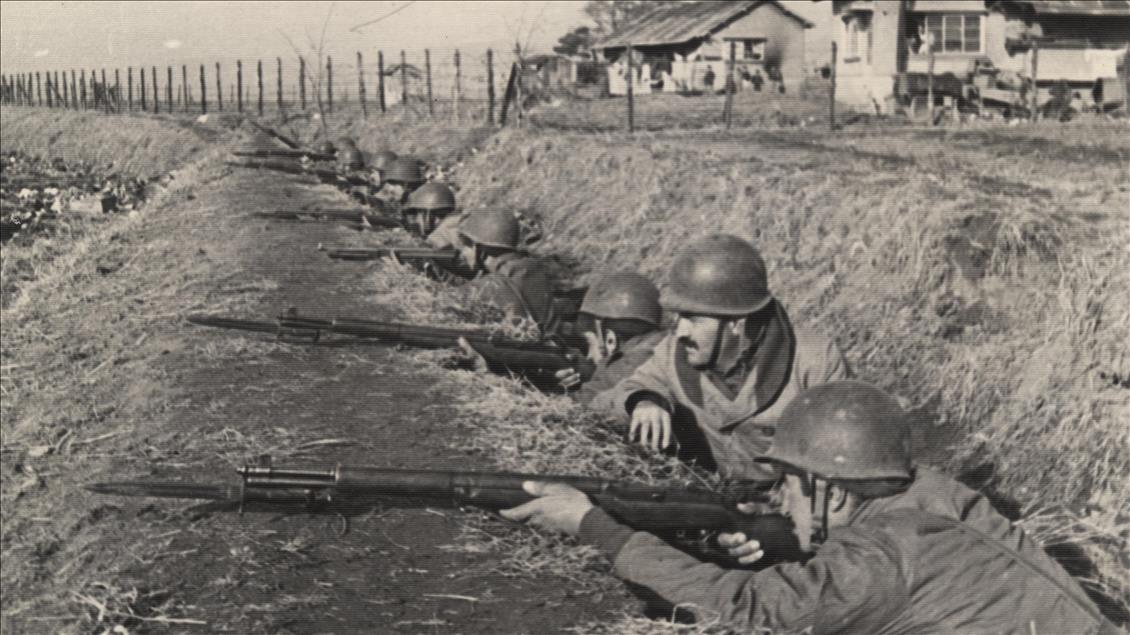
Rare photos of Turkish troops who fought in Korean War
The Turkish General Staff revealed rare photos of the Turkish troops who were sent to fight in the 1950 Korean War on the occasion of the anniversary of their deployment
photo / Turkey

Rare photos of Turkish troops who fought in Korean War
The Turkish General Staff revealed rare photos of the Turkish troops who were sent to fight in the 1950 Korean War on the occasion of the anniversary of their deployment
photo / Turkey
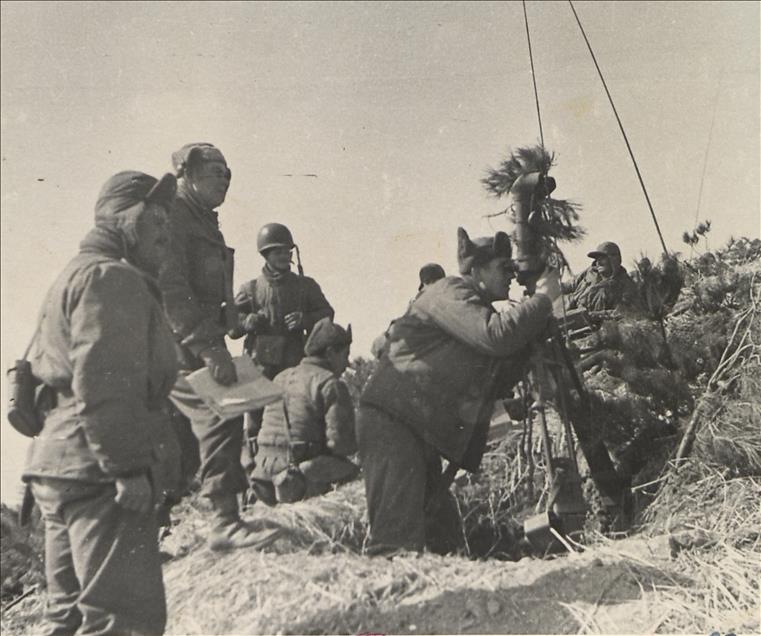
Rare photos of Turkish troops who fought in Korean War
photo / Turkey
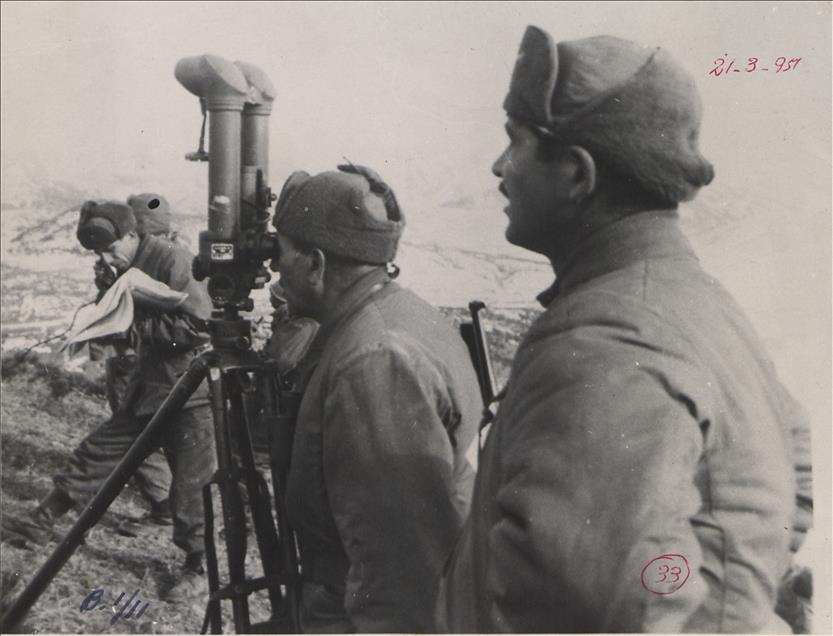
Rare photos of Turkish troops who fought in Korean War
photo / Turkey
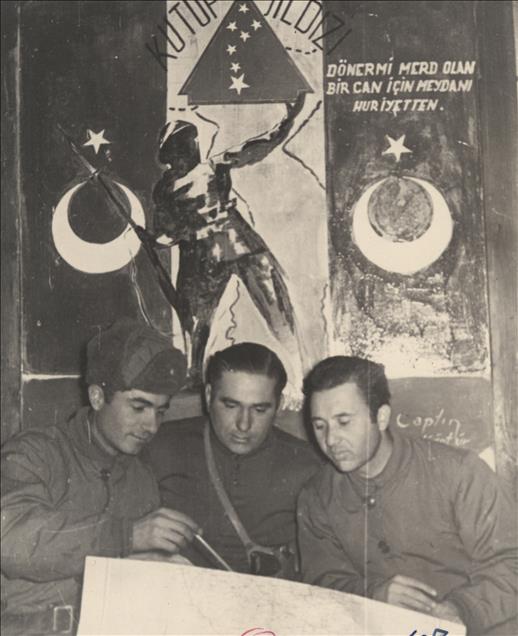
Rare photos of Turkish troops who fought in Korean War
photo / Turkey

Rare photos of Turkish troops who fought in Korean War
photo / Turkey
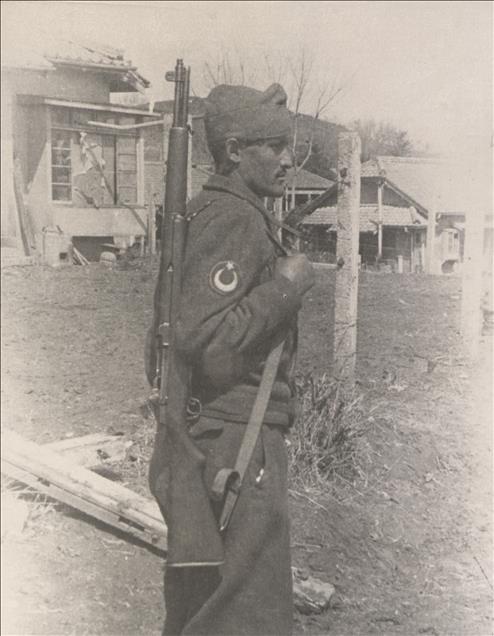
Rare photos of Turkish troops who fought in Korean War
photo / Turkey

Rare photos of Turkish troops who fought in Korean War
The Turkish General Staff revealed rare photos of the Turkish troops who were sent to fight in the 1950 Korean War on the occasion of the anniversary of their deployment
photo / Turkey

Rare photos of Turkish troops who fought in Korean War
The Turkish General Staff revealed rare photos of the Turkish troops who were sent to fight in the 1950 Korean War on the occasion of the anniversary of their deployment
photo / Turkey

Rare photos of Turkish troops who fought in Korean War
The Turkish General Staff revealed rare photos of the Turkish troops who were sent to fight in the 1950 Korean War on the occasion of the anniversary of their deployment

Rare photos of Turkish troops who fought in Korean War
The Turkish General Staff revealed rare photos of the Turkish troops who were sent to fight in the 1950 Korean War on the occasion of the anniversary of their deployment
photo / Turkey

Rare photos of Turkish troops who fought in Korean War
The Turkish General Staff revealed rare photos of the Turkish troops who were sent to fight in the 1950 Korean War on the occasion of the anniversary of their deployment
photo / Turkey

Rare photos of Turkish troops who fought in Korean War
photo / Turkey

Rare photos of Turkish troops who fought in Korean War
photo / Turkey

Rare photos of Turkish troops who fought in Korean War
photo / Turkey

Rare photos of Turkish troops who fought in Korean War
photo / Turkey

Rare photos of Turkish troops who fought in Korean War
photo / Turkey

Rare photos of Turkish troops who fought in Korean War
The Turkish General Staff revealed rare photos of the Turkish troops who were sent to fight in the 1950 Korean War on the occasion of the anniversary of their deployment
photo / Turkey

Rare photos of Turkish troops who fought in Korean War
The Turkish General Staff revealed rare photos of the Turkish troops who were sent to fight in the 1950 Korean War on the occasion of the anniversary of their deployment
photo / Turkey

Rare photos of Turkish troops who fought in Korean War
The Turkish General Staff revealed rare photos of the Turkish troops who were sent to fight in the 1950 Korean War on the occasion of the anniversary of their deployment
The South Korean aircraft manufacturer Korean Aerospace Industries has begun ground testing of the KF-21 Borama fighter. The plane was created as a cheap alternative to the American F-35 fighter. Borame does not have internal weapon hardpoints needed to reduce visibility. This does not allow it to be attributed to the fifth generation of aircraft. At the same time, he will be able to fly faster than the F-35, accelerating to a speed of Mach 1.9. On an external sling, the aircraft will be able to carry up to 10 missiles.
The aircraft actually belongs to the generation 4 plus fighters. The manufacturer claims that the radar of their aircraft is better than that of Russian or Chinese aircraft, although it is not clear how they came to such conclusions, other countries except Russia do not have exact information about the capabilities of the Su-57 radars. It is alleged that in total, at the points of external suspension, the KF-21 will be able to carry up to 7.5 tons of bombs, missiles or external fuel tanks, increasing the range of the vehicle. Such a load is quite at the level of the American F-35 and noticeably more than that of the F-22.
The aircraft is equipped with an active phased antenna array and software at the level of fifth-generation aircraft. There are also optical and thermal imaging passive systems for searching and aiming at enemy aircraft. The KF-21 in the Block 2 version will receive large compartments for the internal placement of weapons: this will reduce its radio visibility to the level of the F-117, and the Block 3 version will receive even lower radio visibility, closer to the F-22.
The aircraft actually belongs to the generation 4 plus fighters. The manufacturer claims that the radar of their aircraft is better than that of Russian or Chinese aircraft, although it is not clear how they came to such conclusions, other countries except Russia do not have exact information about the capabilities of the Su-57 radars. It is alleged that in total, at the points of external suspension, the KF-21 will be able to carry up to 7.5 tons of bombs, missiles or external fuel tanks, increasing the range of the vehicle. Such a load is quite at the level of the American F-35 and noticeably more than that of the F-22.
The aircraft is equipped with an active phased antenna array and software at the level of fifth-generation aircraft. There are also optical and thermal imaging passive systems for searching and aiming at enemy aircraft. The KF-21 in the Block 2 version will receive large compartments for the internal placement of weapons: this will reduce its radio visibility to the level of the F-117, and the Block 3 version will receive even lower radio visibility, closer to the F-22.
Large-scale US and South Korean Ssangyong amphibious landing maneuvers have started. South Korea's and the US's Ssangyong exercise became a deterrent to North Korea's latest ICBM launch. About 30 ships, at least 70 aircraft and helicopters, as well as landing craft are involved in the exercises. In addition, for the first time, 40 British Marines will take part in the maneuvers, and the military from Australia, the Philippines and France will be present as observers. Aviation is also involved in the exercises, the video shows B-1B bombers, US Air Force F-16C fighters and South Korean F-35A. The Ssangyong exercises are part of the larger Freedom Shield maneuvers.
Similar threads
- Replies
- 1
- Views
- 442
- Replies
- 0
- Views
- 296
- Replies
- 1
- Views
- 457
- Replies
- 0
- Views
- 339
- Replies
- 0
- Views
- 3K
Latest posts
-
-
-
Cabinet approves COAS Gen Asim Munir's promotion to field marshal
- Latest: FourMikeEcho
-
Pakistan Defence Latest Posts
-
-
Cabinet approves COAS Gen Asim Munir's promotion to field marshal
- Latest: FourMikeEcho
-
-
Why Pakistan’s JF-17 Thunder Is Outshining India’s Tejas on the World Stage
- Latest: FourMikeEcho
Pakistan Affairs Latest Posts
-
Russia Has Delivered MI-35M Assault Helicopters To Pakistan
- Latest: Defense Reader
-
India launches missile attacks on Multiple locations in Pakistan,
- Latest: RaktimChandra


